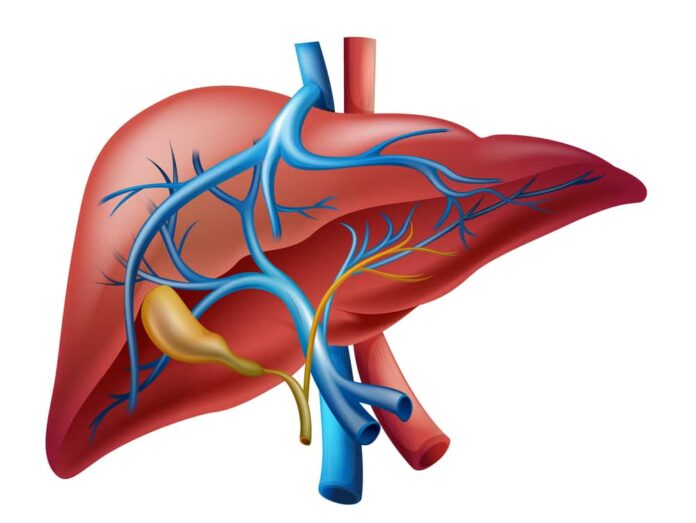Overview Of Budd-Chiari Syndrome
Budd-Chiari Syndrome is a rare disorder characterized by obstruction of the veins of the liver that carry the blood flow from the liver.
When the blood flows out of the liver is impeded, blood backs up in the liver, causing it to enlarge (hepatomegaly). The spleen may also enlarge (splenomegaly). This backup of blood increases blood pressure in the portal vein, which carries blood to the liver from the intestines (portal hypertension), and result in dilated, twisted veins in the esophagus (esophageal varices). Portal hypertension, leads to fluid accumulating in the abdomen (called ascites). The clot may extend to also block the inferior vena cava (the large vein that carries blood from the lower parts of the body to the heart). Varicose veins in the abdomen near the skin’s surface may develop and become visible. In some cases, scarring of the liver (cirrhosis) occurs. Other symptoms may include fatigue, abdominal pain, nausea, jaundice, and bleeding in the esophagus. The severity of the disorder varies from case to case, depending on the site and number of affected veins. It most often occurs in patients which have a disorder that makes blood more likely to clot, such as those who are pregnant or who have a tumor, a chronic inflammatory disease, a clotting disorder, an infection, or a myeloproliferative disorder. In about one-third of Budd-Chiari syndrome cases, the cause of Hepatic vein obstruction is unknown. Drugs or surgical interventions may be used to dissolve or decrease the size of the obstruction (if it is a clot). In some cases, liver transplantation is needed.
Budd-Chiari syndrome should be considered separate from veno-occlusive disease (VOD).
Causes Of Budd-Chiari Syndrome
Hepatic vein obstruction prevents blood from flowing out of the liver and back to the heart. This blockage can cause liver damage. Obstruction of this vein can be caused by a tumor or growth pressing on the vessel, or by a clot in the vessel (hepatic vein thrombosis).
Most often, it is caused by conditions that make blood clots more likely to form, including:
- Abnormal growth of cells in the bone marrow (myeloproliferative disorders)
- Cancers
- Chronic inflammatory or autoimmune diseases
- Infections
- Inherited (hereditary) or acquired problems with blood clotting
- Oral contraceptives
- Pregnancy
Hepatic vein blockage is the most common cause of Budd-Chiari syndrome.
Symptoms
- Abdominal swelling or stretching due to fluid in the abdomen
- Pain in the right upper abdomen
- Vomiting blood
- Yellowing of the skin (jaundice)
Treatment Of Budd-Chiari Syndrome
Treatment varies, depending on the cause of the blockage.
Your health care provider may recommend the following medicines:
- Blood thinners (anticoagulants)
- Clot-busting drugs (thrombolytic treatment)
- Medicines to treat liver disease, including ascites
Surgery for Budd-Chiari Syndrome may be recommended. This may involve:
- Angioplasty and stent placement
- Transjugular intrahepatic portosystemic shunt (TIPS)
- Venous shunt surgery
- Liver transplant
Other
One of the signs is swelling of the abdomen from fluid buildup (ascites). The liver is often swollen and tender.
Tests for Budd-Chiari syndrome include:
- CT scan or MRI of the abdomen
- Doppler ultrasound of the liver veins
- Liver biopsy
- Liver function tests
- Ultrasound of the liver
Source



